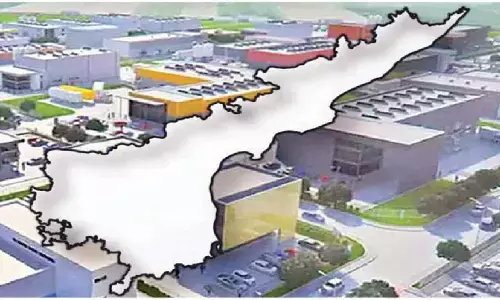Need for holistic policy

The new Railway Budget is all likely to focus on showcasing the proposed high speed rail (HSR) network as the cynosure of India‘s future course of growth in this vital transport sector.
The new Railway Budget is all likely to focus on showcasing the proposed high speed rail (HSR) network as the cynosure of India‘s future course of growth in this vital transport sector. The HSR is normally referred to the rail corridors with trains running at 250 kmph and above. Available literature suggests that fifteen countries in the world have commercially operated HSRs. Two more nations have such corridors under construction. India is one among ten countries planning for HSR. Railway budget since 2000-01 contained periodic references to the intention of government to go for HSR. The Narendra Modi government seems determined to introduce HSR. The first budget itself made this intention clear. The Railway Budget is likely to see many more announcements.
The time has come for a holistic policy on HSR that would address the basic issues governing such a project, keeping in view international experience. The first and the foremost concern in unveiling HSR is its highly capital-intensive nature. Chinese experience is often cited in India to justify the HSR despite its capital costs. It’s true that China had a remarkable success in building an ambitious HSR network in a decade. But, it was a massive State-led effort. On the contrary, India plans to build this network relying on foreign direct investment and public private partnership. The implications of such a financing model on its viability and affordability should be closely studied. There are many other lessons to learn from China. China implemented planned speed upgrades on its rail network while expanding the network. The Railway Budget in India should balance between the need for massive expansion of the existing rail network, phased increase in the speeds on various routes and trains, ensuring higher levels of rail safety, and the HSR network that would run bullet trains.
The rail network should integrate the geographic and economic regions to rebalance economic growth. Islands of high speed corridors with vast tracts of national territory deprived of basic rail services or condemned to low quality rail network cannot be an acceptable policy option suitable to India’s transport needs. Any plan for the railway expansion should take into account population density, levels of urbanisation, migration patterns, population mobility, linking industry with labour pool, increasing logistics efficiency, improving market access etc. While absorbing the FDI, the government should also focus on localisation of advanced rail technology product manufacturing. Foreign suppliers should be asked to collaborate with local manufacturers so that technology transfer takes place. India should not end up as a passive recipient of foreign investment and technology in this sector. It should gradually aim at a share in global HSR market. The HSR policy should also embrace the ‘Make in India’ slogan. This requires a national focus on advanced rail research and development.

















